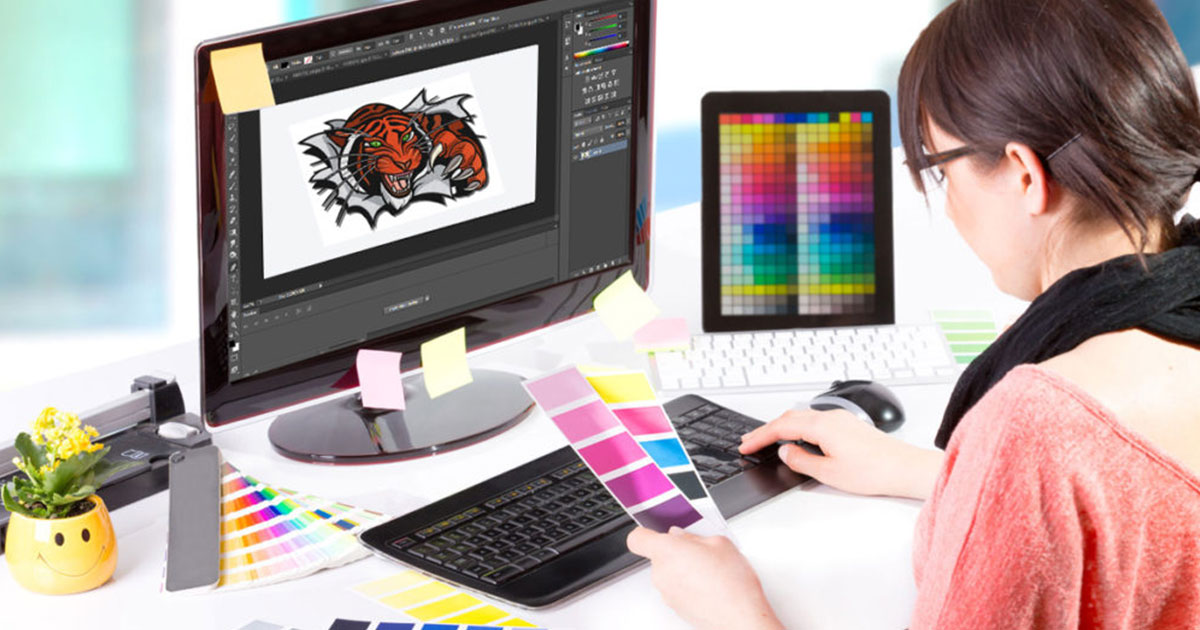Affordable Digitizing for Embroidery: Precision and Detail
Affordable Digitizing for Embroidery: Precision and Detail
Blog Article
Simplifying the Art of Needlework Digitizing: Step-by-Step Guide
Needlework digitizing is a meticulous craft that requires precision and imagination. As technology continues to advance, the digitization procedure has become extra available, enabling fanatics to bring their complex styles to life effortlessly. In this guide, we will certainly unwind the complexities of embroidery digitizing, breaking down each action methodically to improve the procedure and equip both newbies and experienced embroiderers alike. Stay tuned to find how you can simplify this intricate art kind and change your creative visions right into magnificently embroidered work of arts.
Understanding Embroidery Digitizing Software Application
Embroidery digitizing software application offers as an essential tool for transforming intricate styles right into electronic styles suitable with needlework devices, assisting in precise stitching and personalization. This specialized software program permits users to import different photo documents layouts, such as JPG or PNG, and transform them into embroidery machine-readable layouts like DST, EXP, or PES - Digitizing for Embroidery. By making use of attributes like stitch modifying, rug options, and string color selection, digitizing software application makes it possible for customers to manage every facet of the layout process
Furthermore, progressed embroidery digitizing software program provides tools for creating complicated designs, adjusting stitch thickness, and integrating detailed information. Customers can also preview the style prior to sewing it out, making sure accuracy and minimizing errors. In addition, lots of software program programs provide automated attributes that assist improve the digitizing procedure, saving time and effort.
Recognizing the abilities of embroidery digitizing software is important for accomplishing high-quality cause embroidery projects. By grasping this tool, embroidery enthusiasts and professionals can release their imagination and bring detailed styles to life with precision and effectiveness.

Picking the Right Design Documents
After acquainting yourself with the capacities of embroidery digitizing software program, the following vital action in the procedure is choosing the right layout data for your task. Digitizing for Embroidery. When selecting a design data for embroidery digitizing, it's vital to take into consideration the intricacy of the design, the dimension of the final product, and the kind of fabric you will certainly be dealing with
For complex layouts with fine information, a high-resolution picture or vector file is suggested to ensure that the needlework device can precisely recreate the design. Furthermore, the size of the final product plays a substantial role in selecting the ideal layout file. Larger designs might require greater resolution files to maintain clarity and sharpness.
Furthermore, the kind of textile you will be stitching on affects the choice of layout documents. Different materials may need adjustments in the layout documents to make sure that the stitches are properly straightened and the design appears as planned. By meticulously selecting the right design file based on these elements, you can set yourself up for an effective embroidery digitizing procedure.
Digitizing Tools and Techniques
Using specialized software program and accuracy techniques, digitizing tools are important in transforming elaborate designs into embroidery-ready documents. Embroidery digitizing software, such as Wilcom, Hatch, or Embrilliance, provides the needed platform to convert art work into stitch data. These programs provide attributes like stitch modifying, padding choices, and lettering devices pop over to this web-site to guarantee the design converts flawlessly onto fabric.
Among the vital methods in digitizing is creating a clear path for the needlework maker to comply with. This includes digitizing each aspect of the style with accuracy, identifying stitch kinds, thickness, and instructions. By utilizing tools like digitizing tablet computers or software-specific plugins, embroiderers can achieve a high degree of accuracy in their digitized layouts.
Additionally, grasping the art of rug sewing is critical for producing top quality embroidery. Underlay sewing maintains the material and develops a foundation for the layout, guaranteeing that the end product is both aesthetically appealing and long-lasting. By recognizing these digitizing tools and methods, embroiderers can raise their craft and bring elaborate designs to life with precision and performance.
Tailoring Stitch Kinds and Instructions
Having developed a structure in digitizing devices and methods, an important facet ahead of time needlework craftsmanship hinges on customizing stitch types and instructions with accuracy and purpose. The selection of stitch types can considerably influence the total appearance and texture of the stitched layout. Satin stitches, known for their smooth and shiny finish, job well for creating boundaries and message. On the various other hand, fill stitches are perfect for covering bigger locations efficiently. By strategically combining these stitch kinds, embroiderers can attain depth and dimension in their designs.
Moreover, the direction of stitches plays an important duty in boosting the aesthetic charm of the final needlework. By exploring with various stitch angles and patterns, embroiderers can bring their styles to life with amazing detail and ins and out.
Screening and Refining Your Digitized Design
To make sure the accuracy and quality of your digitized style, comprehensive screening and improvement are crucial actions in the needlework digitizing procedure. When you have actually finished the digitization of your style, it is essential to examine it prior to waging the actual needlework. Testing permits you to identify any prospective problems such as string breaks, stitch density issues, or layout distortions that might influence the outcome.

After screening, it is essential to refine your digitized layout based on the feedback from the examination sew-out. This might entail tweaking stitch setups, changing densities, or making modifications to the overall layout to achieve the wanted outcome. By iterating through screening and refinement, you can adjust your digitized style to perfection before moving on with the actual needlework process.
Verdict
To conclude, mastering the art of embroidery digitizing requires a complete understanding of the software, choosing the appropriate design file, using digitizing tools and methods, tailoring stitch kinds and instructions, and screening and refining the digitized design. By adhering to these steps, embroiderers can simplify the digitizing procedure and create premium embroidered layouts with accuracy and effectiveness.
Report this page